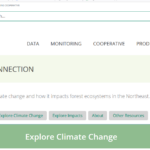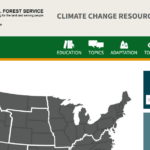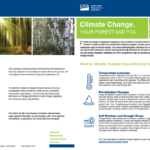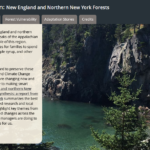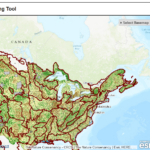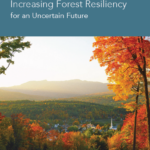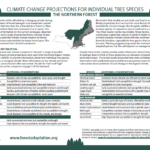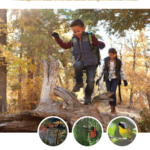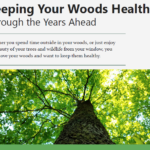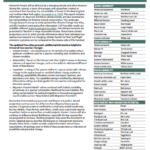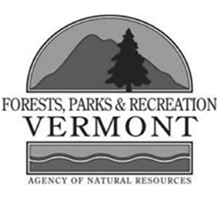Most of us want to leave the world better than we found it.
Forest landowners have a unique opportunity to make a positive impact on the future health of their woods – whether for wildlife habitat, wood products, recreation or any or all of these.
Vermont’s climate has changed pretty drastically just in our lifetimes. Air temperatures are warmer, winters are shorter, and precipitation is often more extreme than it was in the past.
But there is good news: the Vermont Woodlands Association, Vermont Tree Farm Committee, UVM Extension, and Vermont Department of Forests, Parks and Recreation have resources to help you support and protect your woods through the continuing changes to come. Did you know the work you’re already doing is helping to protect your forest against vulnerabilities caused by climate change? Climate-adaptive forestry is something every landowner can do, starting now!
Check out other Climate programs!
The Securing Northeast Forest Carbon Program is a cooperative effort among the State forestry offices in Connecticut, Maine, Massachusetts, New Hampshire, New York, Rhode Island and Vermont to secure as much of the private forest carbon in the northeast region as possible in a 3-year period (2021-2024). The focus is on working forestland carbon. Each State Forester’s office has a forest carbon lead staffer and others will be trained as well in how to encourage private forest owners in the region to secure their forest carbon through carbon sales in the voluntary and compliance markets, through special management practices and through use of conservation easements.
Explore these resources for more information on
the impacts of climate change on forests:
 Got time to watch a video? Click here to hear Ali Kosiba, UVM Extension Assistant Professor of Forestry, talk about her prior role as the climate forester with Vermont Forests, Parks and Recreation. She answered questions about current use, what forest management practices can be used to mitigate climate impacts, the difference between carbon storage and carbon sequestration, and more. She also shared some good resources for forest managers and landowners.
Got time to watch a video? Click here to hear Ali Kosiba, UVM Extension Assistant Professor of Forestry, talk about her prior role as the climate forester with Vermont Forests, Parks and Recreation. She answered questions about current use, what forest management practices can be used to mitigate climate impacts, the difference between carbon storage and carbon sequestration, and more. She also shared some good resources for forest managers and landowners.
Interested in taking a more active role?
Check out these resources for managing your woodlands for climate mitigation:
For even more resources for Climate-adaptive forestry, visit the Climate Change page on the VFPR website.
Looking for information on the 12 Steps for Climate Resilience?

Click here to watch the 12 Steps webinar
from October 6, 2022.

Be on the lookout for our “12 Steps from Climate Resilience” pocket cards at an event in 2024!
Taking an active role, as a steward of your land, can help keep your woodland more resilient to the vulnerabilities of climate change.
This project was a collaboration between Vermont Woodlands Association, UVM Extension, Vermont Forests, Parks and Recreation, and the Tree Farm Program. Concept and content created by Alexandra Kosiba, UVM Extension with drawings by Kati Ripaldi.
This project was supported through the Open Space Institute’s Land and Climate Catalyst Planning Program, which is made possible with major funding from the J.M. Kaplan Fund and Jane’s Trust Foundation, with additional support from generous individual contributions.




